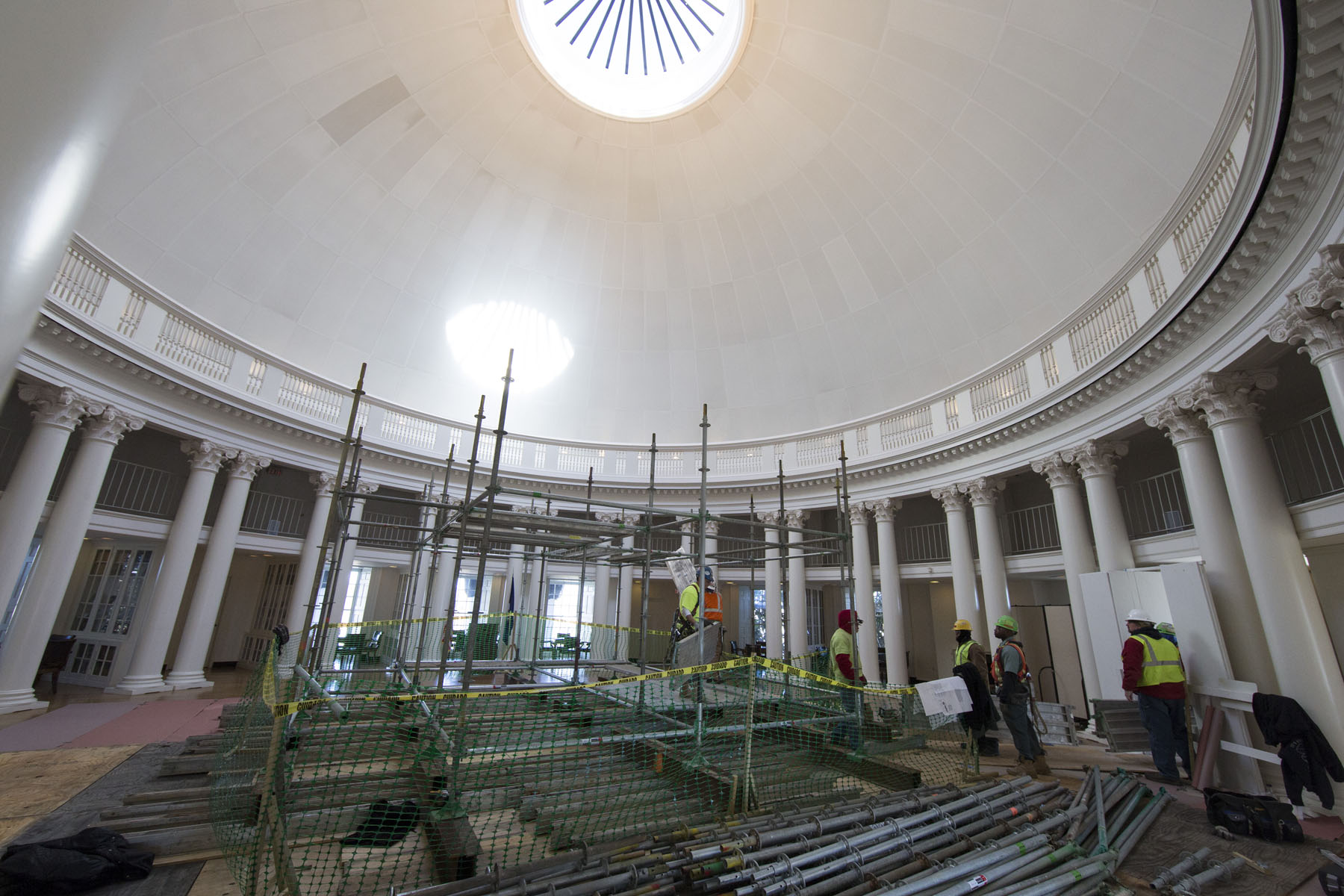During the next several weeks, passers-by will notice changes to the appearance of the University of Virginia’s Rotunda as workers start a new construction phase.
The changes will include new temporary heating units and fuel tanks, wrapping the scaffolding, which has been in place since renovations to the Rotunda got under way in May 2012, with translucent sheets, temporarily replacing window sashes with Plexiglas and installing a temporary black membrane over the oculus, or skylight.
Four heating units will be placed within the construction fencing in both courtyards, with two cylindrical fuel tanks on either side of the Rotunda to service them. The units, which will generate about as much noise as an outside air conditioning condenser, will heat the enclosed scaffolding for about nine weeks.
The heating operation, which will start around Jan. 30, will enable exterior brick repairs during cold weather. The lime mortar used between the bricks requires a minimum temperature of 40 degrees to cure properly.
Also, workers will start removing the existing window sashes around Jan. 28 and replacing them with clear Plexiglas units; plastic tarps will be installed inside the windows to protect occupants from construction debris. The removed sashes will be repaired and stripped of paint in a controlled environment, then repainted and re-installed between mid-March and early May.
Finally, on Friday, workers are scheduled to install a temporary black membrane atop the Rotunda roof to protect the building’s interior between the time the old skylight is removed and a new one is installed, around mid-March. While the Rotunda will remain open during the work, the Dome Room will be closed for about 12 weeks.
The work is all part of the first phase of the Rotunda renovations, which involves replacing the leaking roof and the oculus, as well as repairing the exterior brick walls, windows and ornamental sheet metal.
Future phases include replacing the elevator, restoring the portico column capitals and improving the mechanical, electrical, plumbing, sprinkler and data systems.
The total project, expected to take about five years, will cost around $50 million. It is being funded through a mixture of state appropriations and private gifts.
Designed by Thomas Jefferson as the heart of his Academical Village and begun, but not completed, during his lifetime, the Rotunda was devastated by fire in 1895. It was rebuilt – and largely redesigned – by acclaimed architect Stanford White's firm, McKim, Mead & White. A $2.3 million renovation in 1976 was intended to bring the building back into conformity with Jefferson's original.
That 1976 renovation was the last major work to be done on the building, although maintenance has been performed over the years. But like many an older building, the Rotunda has reached the point that major work is needed.
The marble Corinthian capitals on the building's north and south porticos have been shrouded with black construction netting for about a year, to prevent pieces of the stone from falling.
Media Contact
Article Information
January 24, 2013
/content/rotunda-renovators-prepare-remove-skylight-make-brick-repairs

